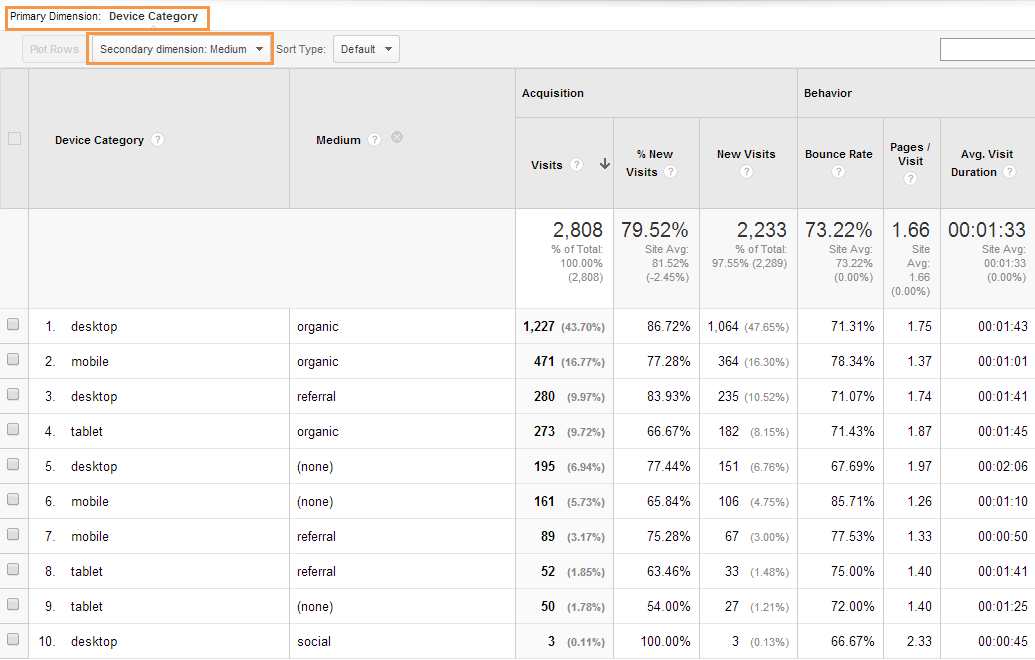Open Advanced Insights with Google Analytics Secondary Dimension Tools
Open Advanced Insights with Google Analytics Secondary Dimension Tools
Blog Article
Opening the Power of Additional Dimension Analytics for Boosted Data Insights and Decision-Making
In the world of data analytics, main measurements often take the limelight, however the true deepness of insights exists within the realm of second dimensions. These added data points provide a nuanced perspective that can light up relationships and patterns not conveniently apparent initially look. By harnessing the power of secondary dimension analytics, organizations can introduce hidden patterns, uncover correlations, and extract much more meaningful conclusions from their information. The possibility for boosted decision-making via the use of these additional measurements is large, promising a deeper understanding of intricate information collections and leading the way for even more informed calculated options.
Value of Additional Measurements
Discovering the value of second measurements in analytics unveils the surprise layers of information insights critical for educated decision-making in various domains. Secondary measurements provide a much deeper understanding of primary information by supplying additional context and perspectives. By incorporating secondary dimensions right into analytics, organizations can remove a lot more thorough and nuanced understandings from their datasets.
One trick significance of second dimensions is their capability to sector and categorize primary data, enabling a more in-depth evaluation of particular parts within a dataset. When looking at the data as a whole, this division allows businesses to recognize patterns, trends, and outliers that could not be evident. Furthermore, additional dimensions assist in discovering correlations and reliances in between different variables, resulting in more precise forecasting and predictive modeling.
In addition, second measurements play a vital role in enhancing information visualization and coverage. By including additional measurements to visualizations, such as graphes or charts, analysts can produce much more helpful and informative representations of information, helping with much better communication of findings to stakeholders. Generally, the integration of additional measurements in analytics contributes in unlocking the full possibility of data and driving evidence-based decision-making.
Secret Benefits of Making Use Of Second Measurements
Making use of secondary measurements in analytics provides organizations a tactical advantage by boosting the depth and granularity of data insights. By studying information making use of additional measurements such as time, area, device kind, or user demographics, organizations can uncover patterns, fads, and connections that may or else continue to be surprise.
Furthermore, the usage of secondary dimensions enhances the context in which key data is interpreted. It provides a much more thorough sight of the relationships between various variables, allowing companies to make informed decisions based on a much more holistic understanding of their information. Additionally, second measurements help with the identification of outliers, anomalies, and areas for optimization, inevitably resulting in extra efficient approaches and improved outcomes. By leveraging second measurements in analytics, organizations can harness the complete potential of their data to drive much better decision-making and attain their service goals.
Advanced Data Analysis Techniques
A deep dive right into advanced information analysis techniques exposes advanced approaches for extracting useful insights from complicated datasets. One such technique is maker discovering, where algorithms are utilized to determine patterns within data, forecast results, and make data-driven decisions. This technique permits the automation of analytical model building, enabling the handling of huge volumes of information at a faster speed than conventional methods.
An additional advanced technique is predictive analytics, which utilizes analytical algorithms and device understanding techniques to forecast future end results based upon historic information. By assessing patterns and patterns, organizations can prepare for consumer behavior, market patterns, and prospective dangers, empowering them to make positive choices.
Moreover, message mining and belief analysis are valuable strategies for drawing out understandings from unstructured information resources such as social media remarks, client evaluations, and survey reactions. By evaluating message data, organizations can comprehend customer point of views, determine emerging patterns, and enhance their services or products based on feedback.
Enhancing Decision-Making With Second Dimensions

Enhancing decision-making with secondary dimensions makes it possible for organizations to make more informed and targeted calculated options. By segmenting consumer information based on second dimensions like purchasing history or involvement degrees, business can customize their advertising and marketing methods to specific audience sections, leading to enhanced conversion prices and customer contentment. Furthermore, additional measurements can assist determine correlations and relationships between various variables, allowing companies to make data-driven Find Out More decisions that drive development and earnings.
Applying Additional Measurement Analytics
When incorporating additional dimensions in analytics, companies can unlock deeper insights that drive calculated decision-making and boost overall performance. This requires understanding the particular concerns the organization looks for to respond to and the information points called for to resolve them.

In addition, companies should take advantage of progressed analytics devices and technologies to streamline the process of integrating additional dimensions. These tools can automate data processing, analysis, and visualization, enabling companies to concentrate on translating understandings rather than hand-operated information manipulation.
Final Thought
In verdict, second measurement analytics play a critical duty in boosting information insights and decision-making processes. By making use of innovative data evaluation methods and carrying out second dimensions effectively, organizations can open the power of their information to drive tactical business choices.
In the realm of information analytics, key measurements often take the limelight, however the true depth of understandings exists within the realm of second dimensions.Using additional dimensions in analytics offers companies a strategic advantage by augmenting the depth and granularity of information understandings. By leveraging additional measurements in analytics, companies can harness the full potential of their information to drive better decision-making and attain their company goals.
Carrying out data validation procedures and routine audits can help preserve data high quality and integrity.
By utilizing innovative data evaluation strategies and carrying out Read More Here additional measurements successfully, organizations can open the power of their data to drive critical service decisions.
Report this page